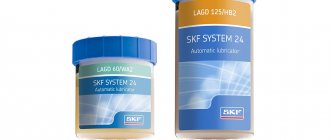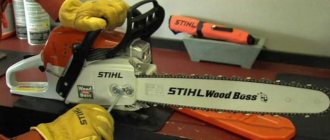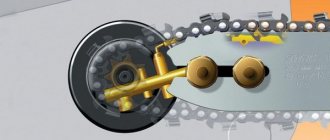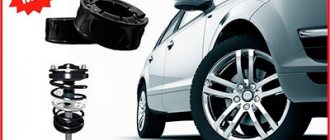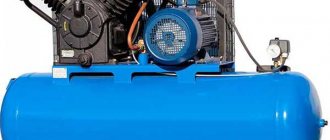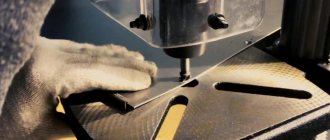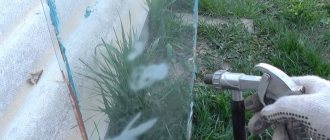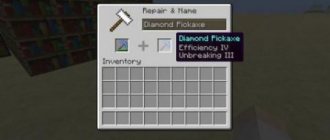Design and principle of operation
The design of the microlubricator is very simple.
This is a metal cylinder mounted on the inlet pipe of a pneumatic tool on a threaded connection. Inside there is an oil container and a mixing chamber. The lubricant enters the chamber from a container connected by a pipe. The air flow passing through the chamber picks up its droplets and mixes them into an oil-air mixture. Next, air enriched with lubricant enters the inlet pipe of the pneumatic tool, lubricating it. The stationary lubricator is somewhat more complicated, but its operating principle is the same.
When designing air lines, one must take into account the limitation: the distance from the lubricator to the consumer should not exceed 8-10 m. Otherwise, the uniformity of mixing of the oil-air mixture will decrease, and droplets will begin to settle on the walls of the hose. The tool will not receive full lubricant. If longer hoses are required, it is better to install portable oil sprayers on the inlet pipes of air tools.
Varieties
Lubricators offered for pneumatic tools can be classified into several categories
First of all, by design:
- portable, attached to the inlet of pneumatic tools;
- stationary, installed near the compressor or distribution center.
Based on tank volume:
- portable up to 100 ml;
- average from 100 to 500 ml;
- large over 500 ml.
According to the material from which the tank and mixing chamber are made:
- metal;
- oil and petrol resistant plastic;
- mixed designs.
By connecting size, inches.
- 1/4;
- 3/8;
- 1/2.
There is special equipment for large production complexes for large thread sizes. There are also devices with external and internal threads. It is necessary to pay attention to these nuances when configuring the equipment.
How to add oil
Before adding lubricant, you must disconnect the tool from the line and make sure that there is no residual pressure in its working parts. To do this, press the power button several times and allow the air to escape from the tool. Next, you need to open the lid and carefully, using a funnel, add lubricant from a small container. It is strictly not recommended to add silt from large canisters; spilling some of the oil and subsequent cleanup is almost inevitable. Many equipment and lubricant manufacturers include special measuring vessels with a spout in the delivery package. They are made of transparent plastic and allow you to measure the required amount at one time and carefully and without loss pour it into the container.
Sometimes novice users ask questions: is it possible to lubricate pneumatic tools without a portable lubricator? The answer is simple: only if a stationary lubricator is used.
Advantages of a mini-lubricator
Features of the use of lubricant "cyatim 221". analogues
The use of an oil sprayer is a prerequisite for the operation of pneumatic tools. Manufacturers in the user manual must indicate a list of recommended and compatible brands of lubricants.
The use of devices has the following advantages:
Automation of lubricant supply to pneumatic equipment. This saves working time spent on equipment maintenance. You just need to monitor the level of lubricant in the container. A high-quality oil-air mixture significantly reduces wear on the moving parts of pneumatic tools and increases its performance. In addition, the service life of equipment is significantly extended and non-productive costs for its repair are reduced. Reduced resource losses that occur during breakdowns and production stops
This is especially important for enterprises operating in continuous cycle conditions. Current designs of mini-lubricators are very compact and do not create interference or inconvenience when working with the tool throughout the entire shift. Multipoint devices allow simultaneous supply of up to 8 different consumers. For each, an individual mode of saturating the mixture with lubricant can be set.
Old models had a drawback - large weight and dimensions, which interfered with the worker’s movements and caused increased fatigue during prolonged work.
How and with what frequency should pneumatic tools be lubricated?
However, there is another way - to install a mini-lubricator or air preparation unit on the device. For pneumatic tools, it is recommended to use special oil with special additives, because any other industrial oils have a negative effect on the rubber parts of the tool.
In addition to oil sprayers, there are other systems for lubricating compressed air with oil mist. The oil mist thus obtained has a high degree of homogeneity with a particle size of 0.3-2 µm. This significantly reduces oil consumption and also supplies lubricated air to devices located at a distance of up to 500 m.
Mobil Almo oil is a highly purified mineral oil based on paraffin and contains emulsifiers, anti-wear, adhesive and anti-corrosion additives. The product is designed to protect against aging and corrosion in hammer drills and other pneumatic tools.
- Lubricator for lubrication of pneumatic tools
Meets all tests and specifications developed for oils used in severe mining applications. It is approved by Ingersoll Rand Company, Joy Manufacturing Company and other companies.
For Camozzi industrial pneumatics, lubrication is not necessary, because... During manufacturing, a grease is added that is designed for the entire service life of the product. But if you do not use oil-moisture separator filters, then this substance is washed out over time by moisture in the air. If additional lubricant (lubrication) is already supplied to the system, then its supply cannot be stopped, because this lubricant also washes away the grease. The maximum amount of oil supply is 1 drop per minute for machines with medium speed. Recommended oil viscosity is 32 cSt at 40 degrees. Celsius.
The use of oil sprayers (lubricators) is necessary in cases where mechanisms are used in extreme conditions with a high frequency of operation - more than 40 times per minute, or with a high speed of movement - more than 1 m/s.
Nailer care and lubrication
Like any professional pneumatic tool, the mounting gun is manufactured taking into account the high functional load. Since this equipment is quite reliable, then, in principle, all care consists of observing generally accepted measures and standards for operation and cleaning.
They are quite simple and consist of removing contaminants that periodically accumulate on working parts and careful handling. The tool must not be thrown. You need to make sure that no water gets into it. In short, mechanical deformation and damage must be avoided.
Everything said above can be attributed to any devices. As for the pneumatic nailer, it is also necessary to add that this type of tool needs to be lubricated. This is done according to the manufacturer's instructions. Most often, this procedure involves placing a few (2-3) drops of oil into the connecting fitting before starting work. This manipulation must be repeated in the middle of the working day if the tool is actively used.
If there is a long break in work, it is recommended to drop the same 3 drops into the nailer and take several shots to distribute the oil evenly. This will protect the inner surface from corrosion.
Linear lubricator for pneumatic tools, JONNESWAY, JA-7253
Linear lubricator for pneumatic tools, JONNESWAY, JA-7253
with delivery throughout Russia: Moscow, St. Petersburg, Rostov-on-Don, Nizhny Novgorod, Samara, Chelyabinsk, Yekaterinburg, Novosibirsk and other cities. A
- Abakan
- Azov
- Alexandrov
- Aleksin
- Almetyevsk
- Anapa
- Angarsk
- Anzhero-Sudzhensk
- Apatity
- Arzamas
- Armavir
- Arsenyev
- Artyom
- Arkhangelsk
- Asbestos
- Astrakhan
- Achinsk
B
- Balakovo
- Balakhna
- Balashikha
- Balashov
- Barnaul
- Bataysk
- Belgorod
- Belebey
- Belovo
- Belogorsk
- Beloretsk
- Belorechensk
- Berdsk
- Berezniki
- Berezovsky
- Biysk
- Birobidzhan
- Blagoveshchensk
- Bor
- Borisoglebsk
- Borovichi
- Bratsk
- Bryansk
- Bugulma
- Budennovsk
- Buzuluk
- Buynaksk
IN
- Velikie Luki
- Velikiy Novgorod
- Upper Pyshma
- Vidnoe
- Vladivostok
- Vladikavkaz
- Vladimir
- Volgograd
- Volgodonsk
- Volzhsk
- Volzhsky
- Vologda
- Volsk
- Vorkuta
- Voronezh
- Voskresensk
- Votkinsk
- Vsevolozhsk
- Vyborg
- Vyksa
- Vyazma
G
- Gatchina
- Gelendzhik
- Georgievsk
- Glazov
- Gorno-Altaisk
- Grozny
- Gubkin
- Gudermes
- Gukovo
- Gus-Khrustalny
D
Recirculation Air System Methods
- Derbent
- Dzerzhinsk
- Dimitrovgrad
- Dmitrov
- Dolgoprudny
- Domodedovo
- Donskoy
- Dubna
E
- Yegoryevsk
- Yeysk
- Ekaterinburg
- Elabuga
- Dace
- Essentuki
AND
- Zheleznogorsk
- Zheleznogorsk
- Railway
- Zhigulevsk
- Zhukovsky
Z
- Zarechny
- Zelenogorsk
- Zelenodolsk
- Zlatoust
AND
- Ivanovo
- Ivanteevka
- Izhevsk
- Izberbash
- Irkutsk
- Iskitim
- Ishim
- Ishimbay
Y
Yoshkar-Ola
TO
- Kaliningrad
- Kaluga
- Kamensk-Uralsky
- Kamensk-Shakhtinsky
- Kamyshin
- Kansk
- Kaspiysk
- Kemerovo
- Kineshma
- Kirishi
- Kirov
- Kirovo-Chepetsk
- Kiselevsk
- Kislovodsk
- Klimovsk
- Wedge
- Klintsy
- Kovrov
- Kogalym
- Kolomna
- Komsomolsk-on-Amur
- Kopeisk
- Korolev
- Kostroma
- Kotlas
- Krasnogorsk
- Krasnodar
- Krasnokamensk
- Krasnokamsk
- Krasnoturinsk
- Krasnoyarsk
- Kropotkin
- Krymsk
- Kstovo
- Kuznetsk
- Kumertau
- Kungur
- Mound
- Kursk
- Kyzyl
L
- Labinsk
- Leninogorsk
- Leninsk-Kuznetsky
- Lesosibirsk
- Lipetsk
- Liski
- Lobnya
- Lysva
- Lytkarino
- Lyubertsy
M
Oil filter VAZ 2107: what is it for and how to change it
- Magadan
- Magnitogorsk
- Maykop
- Makhachkala
- Mezhdurechensk
- Meleuz
- Miass
- Mineral water
- Minusinsk
- Mikhailovka
- Mikhailovsk
- Michurinsk
- Moscow
- Murmansk
- Moore
- Mytishchi
N
- Naberezhnye Chelny
- Nazarovo
- Nazran
- Nalchik
- Naro-Fominsk
- Nakhodka
- Nevinnomyssk
- Neryungri
- Neftekamsk
- Nefteyugansk
- Nizhnevartovsk
- Nizhnekamsk
- Nizhny Novgorod
- Nizhny Tagil
- Novoaltaysk
- Novokuznetsk
- Novokuibyshevsk
- Novomoskovsk
- Novorossiysk
- Novosibirsk
- Novotroitsk
- Novouralsk
- Novocheboksarsk
- Novocherkassk
- Novoshakhtinsk
- New Urengoy
- Noginsk
- Norilsk
- Noyabrsk
- Nyagan
ABOUT
- Obninsk
- Odintsovo
- Ozyorsk
- October
- Omsk
- Eagle
- Orenburg
- Orekhovo-Zuevo
- Orsk
P
- Pavlovo
- Pavlovsky Posad
- Penza
- Pervouralsk
- Permian
- Petrozavodsk
- Petropavlovsk-Kamchatsky
- Podolsk
- Polevskoy
- Prokopyevsk
- Chill
- Pskov
- Pushkino
- Pyatigorsk
R
- Ramenskoye
- Revda
- Reutov
- Rzhev
- Roslavl
- Rossosh
- Rostov-on-Don
- Rubtsovsk
- Rybinsk
- Ryazan
WITH
- Salavat
- Salsk
- Samara
- Saint Petersburg
- Saransk
- Sarapul
- Saratov
- Sarov
- Free
- Severodvinsk
- Seversk
- Sergiev Posad
- Serov
- Serpukhov
- Sertolovo
- Sibay
- Slavyansk-on-Kuban
- Smolensk
- Solikamsk
- Solnechnogorsk
- Pinery
- Sochi
- Stavropol
- Stary Oskol
- Sterlitamak
- Stupino
- Surgut
- Sizran
- Syktyvkar
T
- Taganrog
- Tambov
- Tver
- Timashevsk
- Tikhvin
- Tikhoretsk
- Tobolsk
- Tolyatti
- Tomsk
- Troitsk
- Tuapse
- Tuymazy
- Tula
- Tyumen
U
- Nodal
- Ulan-Ude
- Ulyanovsk
- Urus-Martan
- Usolye-Sibirskoye
- Ussuriysk
- Ust-Ilimsk
- Ufa
- Ukhta
F
Fryazino
X
- Khabarovsk
- Khanty-Mansiysk
- Khasavyurt
- Khimki
H
- Chaikovsky
- Chapaevsk
- Cheboksary
- Chelyabinsk
- Cheremkhovo
- Cherepovets
- Cherkessk
- Chernogorsk
- Chekhov
- Chistopol
- Chita
Sh
- Shadrinsk
- Shawls
- Mines
- Shuya
SCH
- Shchyokino
- Shchelkovo
E
- Elektrostal
- Elista
- Engels
YU
- Yuzhno-Sakhalinsk
- Yurga
I
- Yakutsk
- Yaroslavl
Delivery
Courier delivery:
Term:3-5
days in Moscow from
350 rub.
, outside the Moscow Ring Road: Delivery calculator ▼
Distance from MKAD:
Item weight: kg
Cost of delivery 180
rub
Transport company:
from Moscow Delivery information ► (Dispatch of TC is carried out on 100% prepayment)
Delivery distance:
Item weight: kg
Cost of delivery 180
rub
Pickup: Entrance and entry into the territory - Free.
Address:
Moscow, Kyiv highway, 22nd km, house. 4, building 4, floor 3, building D, entrance 20, warehouse 359a Directions ►
Payment
Choose the most suitable payment method for yourself Read more ▼
| Payment to the courier (cash/card) | Electronic money transfer | Cashless payment (for legal entities) |
Device installation and configuration
Lubricator installation kit includes:
- liquid container with dosing device;
- bracket with a set of fasteners;
- connecting tubes;
- clamps, adapters, fittings.
The FLASHLUBE kit already includes a 500 ml container of oil.
Installation
The installation process involves selecting a suitable location under the hood of the car, where several points need to be taken into account:
- Before proceeding with installation, you must remove the battery terminal;
- the vessel must be mounted at a sufficient distance from the heated elements of the engine;
- the adjusting screw must be freely accessible;
- the tank must be mounted strictly vertically;
- the liquid level scale should be clearly visible;
- It is advisable to place the container below the vacuum system of the motor.
Lubricator installation diagram
Then mount the bracket and install the dropper. Then determine the insertion location of the supply fitting. For injection cars, the optimal point will be at a distance of 70-120 mm after the throttle valve. On carburetor engines, it is advisable to place the fitting directly behind the throttle valve.
If there are no standard holes for tapping, you need to drill a hole of a suitable diameter, then cut the thread and screw in the fitting. In this case, it would be good to use a sealant for threaded connections, and also to minimize the entry of chips into the intake tract.
When purchasing a kit with automatic control of liquid supply, it is necessary to install the electronic unit no further than 30 cm from the container, and it is important to take into account possible thermal loads. Then stretch and secure the wires to the reservoir, and also mount an LED to indicate the liquid level in the car on the dashboard
Then, according to the diagram, connect the connectors. Power can be taken from the gas injectors or the gas valve.
Adjustment
Dropper for HBO with mechanical feed adjustment
The procedure for setting up a dropper with mechanical feed adjustment comes down to setting the liquid flow rate. To do this, you need to fill the lubricator container with 400-450 ml of oil. Then, with the internal combustion engine running steadily at idle, using the adjustment screw, adjust the fluid flow rate to approximately 10-12 drops per minute. If the setting is done correctly, 1 ml of additive should be consumed per 1 liter of fuel.
To adjust the automatic feed, you need to use a flat screwdriver on the electronic control unit to turn the adjuster screw. The screw arrow should be turned in the direction of the number (from 1 to 9) of the corresponding engine power (kW or hp), according to the table.
Video on installing the LPG lubricator (in English):
What kind of oil to fill
Sometimes when purchasing lubricant lubricant there is a temptation to save money. Purchasing cheap oils of obscure origin from little-known manufacturers seems like savings only at first glance. Such a replacement will inevitably lead to disruptions in the operation of the oil evaporator, uneven saturation of the air flow with lubricant, deterioration of the lubrication conditions of the pneumatic tool, a decrease in its service life and failure.
You need to use exactly the oil that is recommended in the instructions for the tool, or oil from the list of analogues approved by the manufacturer for use.
Separately, it is necessary to ensure the cleanliness of the lubricant, the absence of chemical contaminants and mechanical inclusions. Such “additives” will damage the tool even faster.
If you find an error, please select a piece of text and press Ctrl+Enter.
The use of any pneumatic tool requires that during operation the sprayer be supplied with the cleanest air possible, containing a special oil. Unknowing employees often wonder, “what is a lubricator?”
The principle of operation of the device is quite simple. It helps to carry out work evenly and improves the conditions of the operation. In order to supply fresh and clean air, it is necessary to have an air filter connected to the pneumatic tool. In the second case, you will need a special lubricant.
The lubricator, in addition to adding oil to the aerosol composition, increases both the service life of the mechanical tool and reduces the wear of the surface being sprayed. All these requirements must be met in paint shops. Most often, such equipment is used by employees of workshops, work teams and painting shops.
Most modern devices have dispensers that regulate the supplied oil flow. This allows you to monitor the adjustment of the supplied particles. In addition, using a dispenser, the level of the total amount of oil in the working container can be easily adjusted.
To increase the service life of the equipment several times, you should ensure that the fluid recommended by the manufacturer is poured into the mechanism. If consumables of reduced quality are used, there is a high risk that in addition to the pneumatic device itself, the product itself will fail.
Criterias of choice
When choosing a device, you must be guided, first of all, by what work the equipment is required for and what its volume is. The purchase of equipment must, among other things, also be economically justified.
The following parameters are key:
- Lubricator throughput. It must be no less than the operating flow rate of the connected consumer. It is better to provide a 10-20% reserve for peak loads. Using a device with a lower capacity will lead to a decrease in the consumer’s operating efficiency and deterioration of lubrication conditions.
- Operating pressure. Of course, you cannot install a device designed for less pressure than the load consumes. Such a vessel will simply fail. Too large a pressure reserve will not improve the operating conditions of the equipment, but will lead to an unjustified increase in the cost of the planned purchase.
- Materials used. It is better to choose metal vessels, especially those designed for high pressure. And not just any Chinese ones, but only high-quality alloys produced by global brands. The consequences of a hull rupture will be significantly more expensive.
- Connecting dimensions. The dimensions and type of thread must be suitable for the user. The use of adapters in this case is highly undesirable. Many manufacturers directly indicate the inadmissibility of this approach
If you do not have sufficient skills in handling pneumatic tools and organizing air lines, it is better to engage an experienced expert for consultation.
It is imperative to install a water vapor separator BEFORE the lubricator or distribution unit. Moisture entering the device will significantly reduce its performance. The quality of lubrication of pneumatic tools and its performance will also decrease. Prolonged operation in this mode will lead to breakdown and costly repairs.
During work, you should systematically check the oil level in the reservoir and replenish it in a timely manner. It is better to do this before starting work, so that you do not have to be interrupted in the middle of the working day.
The cost of the tool and what affects it
Once a specific model has already been selected, employees must choose the most relevant cost that will pay for itself quickly. Need a cheap product? It is better to look for a product with low-quality materials. But you have to be careful. If moisture gets on low-quality metal, it can cause corrosion.
Video: Review from the master
Do you need a brand from a domestic manufacturer? There are many suppliers on the Internet who install their devices at a lower cost than foreign companies.
Also, in simple construction stores it is easy to find a special device that meets the necessary standards.
Lubricators are also called oil sprayers and are designed to supply lubricant from a reservoir to the elements of a pneumatic system using a stream of compressed air. The supplied oil sprayers are of the ejector type. The air flow passing through the lubricator is divided into main and ejection.
The ejecting flow causes a local decrease in pressure due to an increase in the velocity head and the pressure difference between the oil reservoir and the spray chamber. This pressure difference is sufficient for the oil to rise up the vertical tube and then through the throttling channel and the curved tube to enter the spray chamber in the form of drops. In the chamber, the oil is atomized in the air flow and enters the main air flow in the form of oil mist, which enters the pneumatic system.
Currently, it is recommended to use as little lubricant supply to the pneumatic system elements as possible, since in such systems liquid lubricant is released into the atmosphere. The use of lubricators in pneumatic systems is mandatory in cases where the system has already used oil spray devices, when the system uses pneumatic cylinders in steel casings, and when the system requires high speeds of movement of the cylinder rod and large diameter pneumatic cylinders are used.
Popular means
On the shelves of pharmacies and stores you can find many products that have different characteristics. In order not to “get lost” in all the variety of lubricants, it is worth having an idea of those specimens that are especially popular among consumers.
Contex
A popular brand that offers consumers lubricants with various characteristics. The cost of goods can be called acceptable; the list of popular ones includes:
- Contex “Strong”;
- Contex “Green”;
- Contex “Romantic”;
- Contex Long Love.
Durex
A line of products with different characteristics. When studying Durex products, you can find gels for intimate massage, as well as prolongators, which contain anesthetic substances.
The most popular are:
- DUREX Play Massage 2in1.
- Durex Play tingle.
- DUREX Massage 2in1 Sensual.
Lovegel
Lubricant for anal and vaginal sex (marked Extreme). Water-based, it acts comprehensively: it reduces the severity of pain and provides easy gliding.
It is completely washed off with water, does not leave stains on linen and clothes, has no odor and goes well with condoms.
Libido-Creme
Excites, stimulates desire, is used to increase the area of erogenous zones. Often used by women to enhance emotional sensations and achieve the greatest degree of arousal. The cream helps increase sensitivity and acts as an emollient and moisturizer.
Extra Flash
Gel Flash Extra is considered a unique lubricant because it affects both men and women. Designed to increase sensitivity. At the moment of intimacy, it increases arousal and sexual desire. It acts as a prolongator on representatives of the stronger sex.
Provocation
A domestically produced product that has conflicting reviews from consumers. Available in gel form, it excites, helps improve gliding and sensations at the moment of intimacy with a man. It has a soft texture and is quickly absorbed due to its water base.
Hot with ginseng
Acts as a means of helping to accumulate energy. The components and essential oils included in the gel stimulate the body's activity, increase sexual attraction and desire. Ginseng acts as a natural aphrodisiac and at the same time increases blood flow to the genitals.
Personal Lubricant H2O
This is far from a cheap lubricant, which has a number of advantages: it softens and moisturizes the skin. It is easily washed off with water, leaves no traces, does not stick, is quickly absorbed into the skin, providing perfect glide. Personal Lubricant H2O is non-allergenic, odorless and tasteless and can be used with sex toys made from synthetic materials.
Water Glide
A German product that has a moisturizing and softening effect. Recommended for use by women who have problems with arousal. Gradually, with regular use, the gel restores the natural microflora of the vagina.
StimuLove light
Classified as a pathogen. It is applied topically, applied to the genitals, immediately before sexual intercourse. It is combined with condoms, products made of latex and other synthetic materials, and is washed off with water.
Desire
A water-based gel that contains pheromones and is used for intimate relationships. Moisturizes, softens and improves gliding, helps enhance sensations at the moment of intercourse. What makes sex bright and memorable. Made on a water basis, does not leave stains.
Geisha's Dream
Classified as an aphrodisiac cream for women. Stimulates the production of natural lubrication, due to increased arousal, increases sensitivity and sexual desire. This allows you to ultimately enjoy intimacy with your partner. Apply the product to the genital area 5 minutes before contact.
What kind of oil to pour into the lubricator. Oil for pneumatic systems (pneumatic tools). Inspections and repairs
For Camozzi industrial pneumatics, lubrication is not necessary, because... During manufacturing, a grease is added that is designed for the entire service life of the product. But if you do not use oil-moisture separator filters, then this substance is washed out over time by moisture in the air. If additional lubricant (lubrication) is already supplied to the system, then its supply cannot be stopped, because this lubricant also washes away the grease. The maximum amount of oil supply is 1 drop per minute for machines with medium speed. Recommended oil viscosity is 32 cSt at 40 degrees. Celsius.
The use of oil sprayers (lubricators) is necessary in cases where mechanisms are used in extreme conditions with a high frequency of operation - more than 40 times per minute, or with a high speed of movement - more than 1 m/s.
Pneumatic tools.
Each instrument on each air duct must be equipped with an air preparation unit, which consists of an oil and moisture separator, a pressure regulator, and an oil sprayer (lubricator). Installation should be carried out as close as possible to the instrument (up to 5 meters) and above it vertically. If there is no air preparation unit, lubricant can be directly poured into the lubrication hole on the tool, at least every half hour of operation. To lubricate pneumatic tools, use pneumatic oil with a viscosity of ISO VG 32 or VG 40.
Moisture in the air is detrimental to the rubbing mechanisms in the tool; it washes away the lubricant and causes corrosion of metal parts.
The use of compressor, engine, and transmission oil is strictly prohibited.
In the warehouses of our organization we always have oil for pneumatic systems and oil for pneumatic tools.
Oil sprayers (lubricators) are supplied with connecting dimensions ranging from M5 - G1″.
Working medium - air; design - two-chamber with a sprayer and regulator; materials - aluminum, technopolymer, NBR; recommended oil is Turbine No. 1 (ISO Vg32).
Typically, pneumatic equipment is used without an oil sprayer (lubricator), since it contains a grease designed for a lifetime. If drives are used in extreme conditions, for example, high frequency (up to 40 or more times per minute) actuation and movement speed (1 m/sec or more) or there is a need for high smoothness of movement, it is necessary to use air with atomized oil. Our company offers oil sprayers with a single spray of oil, which provide oil particles from 0.01 to 0.003 mm.
How the device works
To understand what a lubricator is and how this device works, you need to decide what this oil supply tank actually is. The body of the product is predominantly made of metal. This reservoir is “put on” the working area of the pneumatic tool, and then adjusted using nozzles with suitable threads.
The equipment itself must be installed after the air filter. Otherwise, nothing happens, or the filter will be damaged. If the additional devices are installed correctly, the supplied raw material will be enriched with air and later receive the required amount of oil. Next, the substance enters the hose itself.
In order not to reduce the quality of the operations performed, it is located at a distance of no more than 10 meters. Otherwise, the composition simply will not be supplied in the required quantity to the tool, which will certainly lead to a decrease in the quality of operations. In addition, it is necessary to ensure that no condensation remains in the hose.
However, there are situations when the hose length is simply not enough. In this case, it is best to purchase special-purpose equipment that is installed directly on the tool itself and increases productivity.
In order to understand what mechanism is needed for a certain type of work, it is better to immediately understand what characteristics must correspond to a particular product. The most common of these are:
Diameter of the mounted thread.
The materials from which the tanks were made.
Tank volume.
In addition, employees immediately determine what type of actions will be performed in the work shop. Based on this knowledge, the type of device used is already determined. It can be single-point or multi-point.
And in addition to this data, you should know what type of structure will be used during the work. A filter dispenser can be purchased. It has the property of being installed at the optimal distance between the hose and the handle.
Often workers do not know that such a lubricator is installed on the compressor. In rare cases, installation will be carried out directly on the air flow distribution mechanism.
What is artificial insemination of cows?
Artificial insemination of cows is a fertilization method, the essence of which is the introduction of selected sperm from a stud bull into the uterus of the animal. As a result of such manipulation, after an appropriate amount of time, replenishment appears in the herd.
Thanks to this technique, the producer’s sperm is used more rationally, since one portion is enough to inseminate several cows at once.
Artificial insemination of cows is carried out based on the reproductive cycle of the animal. For this reason, before performing the manipulation, it is necessary to determine at what time it begins. It is known for certain that cows can give birth annually.
Cow insemination
There are three stages of the sexual cycle, the total duration of which is 3 weeks. The specialist must understand these stages in order to choose the right moment to perform the procedure.
The process of estrus in a female
A cow's estrus is one of the stages of the animal's reproductive cycle. At this stage, follicles mature in the body and a sex hormone is synthesized, which affects the functioning of the secretion. This substance is produced by the uterus. The secretion is secreted in a large volume, due to which it reaches the surface of the vulva. As a result, it becomes filled with blood and swells.
When the heat stops, the secretion acquires a thick consistency and the liquid becomes cloudy. This stage can be recognized by the following signs:
- restless behavior of the animal;
- cow activity;
- refusal to eat.
The duration of estrus ranges from several hours to several days.
Sexual heat and ovulation
Sexual hunting begins even during the period when estrus is observed. This indicates that the animal’s body is prepared for insemination. The main sign is that the cow does not move when a bull jumps on her, since the reflex is switched off at the time of conception.
Duration of heat in cows
Other signs:
- licking the genitals;
- The cow constantly puts her head on her back.
Ovulation occurs from the middle of the cycle. In some cases it begins at the end of the hunt. Ovulation is the time when artificial insemination can begin.
In order not to miss the right moment, the herd must be constantly monitored. The optimal option for visiting is up to three times a day. This allows you to identify up to 90% of cows ready for mating. The less often a professional visits the herd, the lower the percentage. To notice the onset of heat and ovulation, the herd must be closely monitored while walking.
If fertilization of the female does not occur, sexual desire disappears. The cow becomes apathetic, the diet improves. In this case, you will have to wait for a new stage of ovulation.
In the video, the specialist talks in detail about how to understand that a cow is in heat.
How to determine if a cow is ready for insemination
The animal’s readiness for reproduction according to physiological parameters occurs already at the age of 9-10 months. The exact timing is influenced by the following points:
- breed of animal;
- place of residence;
- nutrition and care.
Full readiness for insemination occurs when the individual is 24 months old. If conception does not occur at this time, milk production decreases and feed intake increases.
Only a professional can understand exactly when the female’s body is ready for fertilization. At the same time, he must focus not only on physiological processes, but also on the behavior of the animal.
A specialist determines a cow’s readiness to conceive as follows:
- performs an examination of the genital organs and determines their condition;
- checks the vagina and cervix;
- rectally determines the condition of the follicles; by their diameter, the professional will know what stage of heat is occurring.
Thanks to this, the professional knows exactly how many hours are left before ovulation and can perform insemination in a timely manner.
Choosing the moment of artificial insemination of cows
Factors influencing the onset of sexual estrus
The timing of the onset of sexual heat depends on the following factors:
- physiology of the individual;
- animal health;
- food quality;
- conditions of stay;
- care.
Signs that an animal is ready for insemination:
- the immobility reflex appears;
- mucus is formed;
- the vulva increases in size;
- You can palpate a mature follicle rectally.
Fertilization of a cow is performed twice:
- after determining the start of the hunt;
- after 12 hours, always before milking.
Next comes the period of waiting for the end of the hunt. In most cases, the heifer begins to bleed; in the cow, this process occurs only in 50 cases out of 100. This symptom confirms the period of heat, but does not indicate successful conception.
Filter driers
The air in a factory or auto repair shop contains too much excess moisture, impurities and dust, which freely flow into the operating air compressor.
Impurities and moisture can be effectively separated using air filter dehumidifiers, which use fine-mesh copper alloy mesh as the filter element. Like any filter, it requires replacement during operation, which is indicated by a change in the color of the filter element.
To remove excess moisture from the filter, there is a tap at the bottom of the tank. Filter driers are connected at the beginning of the pneumatic line or directly at the tool.
Main differences:
- Inlet size
. Typically these are 1/4″, 3/8″ and 1/2″ and should match the hoses being used; - Degree of purification
. Higher levels of cleaning may be required for paint equipment to minimize excess paint contamination; - Availability of pressure gauge and pressure regulator
.
There are special fine filters for painting equipment. They have several cleaning elements installed, operating sequentially.
The Garage Tools store offers Licota filters for a wide variety of equipment and purposes.
Operating principle of an oil sprayer (lubricator)
The oil sprayer (lubricator) must be supplied with air pre-cleaned from compressor oil and moisture. The figure shows the design of the oil sprayer. If air is supplied to the oil sprayer (lubricator), but there is no air consumption, then equal pressure is established in cavities A and B. The oil sprayer (lubricator) does not work and no oil is sprayed. With the advent of air flow in the oil sprayer, two air flows are formed. The main flow from the inlet, bending membrane 6, passes through the windows and goes directly to the outlet of the oil sprayer. The rest of the flow passes through hole 7, flows around nozzle 8 and, thanks to the suction action of the main flow, also enters the outlet. When flowing around nozzle 8, the auxiliary flow sucks air through it from cavity A, reducing the pressure in it. Under the influence of the higher pressure of cavity B (the pressure in this cavity is equal to the main one), oil from glass 1 rises through tube 9, passes through check valve 5 and from inlet 10 drops fall into the conical hole of nozzle 8. The frequency of drops falling when air flows through the oil sprayer is regulated throttle 4 installed on the communication line between cavities A and B. The frequency of drops falling is also affected by the air flow through the oil nozzle and the oil level in the glass. To reduce the influence of compressed air consumption on the intensity of falling oil droplets, a flexible membrane 6 is used, which automatically adjusts the flow area through the oil sprayer, thereby maintaining the required air flow rate in hole 7. When droplets fall from nozzle 8, the oil is initially sprayed, and the air is drops of oil are carried to the outlet of the oil atomizer, where they meet the main air flow, this leads to re-atomization of the oil, which makes it possible to obtain the smallest drops of oil suspended in the air. If there is no air flow through the oil sprayer, the pressure in cavities A and B is equalized, and the fall of oil drops from nozzle 10 stops. In this case, the ball check valve 5 prevents the oil level from decreasing in pipeline 9 (due to pressure equalization in cavities A and B), due to which the supply of oil for spraying begins immediately after air flow through the oil sprayer occurs.
To come in
Already registered? Sign in here.
There are currently 0 users on the page
There are no users viewing this page.
A modern tire changing machine, despite its apparent simplicity, is a rather complex device. It uses electromechanical, pneumatic, electronic and hydraulic components (mainly in truck tire changing machines) and elements. Moreover, the machines are designed for constant and long-term use.
Let's take, as an example, the issue of the intensity of operation of a tire machine during the so-called high season. As a rule, at this time tire shops work 12–14 hours a day, and some around the clock. Typically, one specialist works at one tire station (one tire changer and one balancing machine). Depending on the qualifications of the employee, servicing a car takes from 40 minutes to one hour. During this time, it is necessary to remove 4 wheels, change the tires, balance the newly assembled wheels and install them on the car. That is, it takes from 10 to 15 minutes to service one wheel. This means that if a service point operates 12 hours a day, then about 50 wheels are disassembled and assembled on one tire machine. At the same time, during the work process, all components and mechanisms of this machine are intensively exploited.
